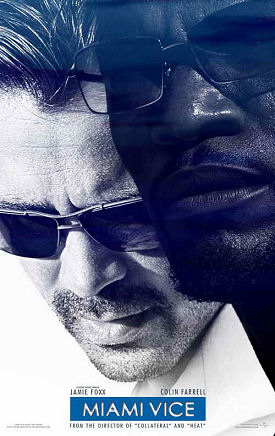Diallo Tyson of Woodbine, Georgia, happened to see John Milius‘s Red Dawn (1984) the other night, and was struck by the parallels between how the Wolverines (Patrick Swayze, C. Thomas Howell, Charlie Sheen, et. al.) respond to the Russian/Cuban invaders of the U.S.A., and how those no-good Iraqi resistance guys have been responding to the U.S. invaders since ’03. And how both have vague echoes in the Wachowski’s V for Vendetta. Red Dawn‘s Wolverines, says Tyson, are “a band of insurgents determined to fight and get their country back. They steal munitions, blow up envoys, set up ambushes, and other general terrorist activities. They don’t really succeed in the end but they put up one hell of a fight. When Dawn was first released, it was described as a piece of right-wing jingoistic-patriotic schlock. But when I was a kid I loved it. You wanted the Wolverines to kick some Russo-Cuban butt, and I know I wasn’t the only one who felt that way. I’ve just mentioned it because this reminded me of some of the criticism V For Vendetta has been getting. I believe you ran a recent quote from someone saying in effect, ‘How can we cheer for a guy in a mask who is a terrorist?’ Well, we’ve cheered for terrorists before….obviously a lot can change in 22 years.” The notion of Wolverines as terrorists (which of course they are, albeit sympathetically portrayed) carries a double irony in that the effort to capture Saddam Hussein in Iraq was called Operation Red Dawn, and, according to Wikipedia, the name came from an American commander, Col. James Hickey, who “was a fan of the Milius film.” He also dubbed the military units who actually captured Hussein ‘Wolverine One’ and ‘Wolverine Two’ after the fictional Wolverines unit in Red Dawn.” I trust the ironies have sufficiently sunk in and I don’t have to trot out the old chesnut, “One man’s terrorist is another man’s freedom fighter.” (I called Milius three times about this yesterday, explaining the gist of my journalistic interest in one of my phone messages, and he never got back…which isn’t like him. He knows me, we’ve spoken over the years, etc.)



